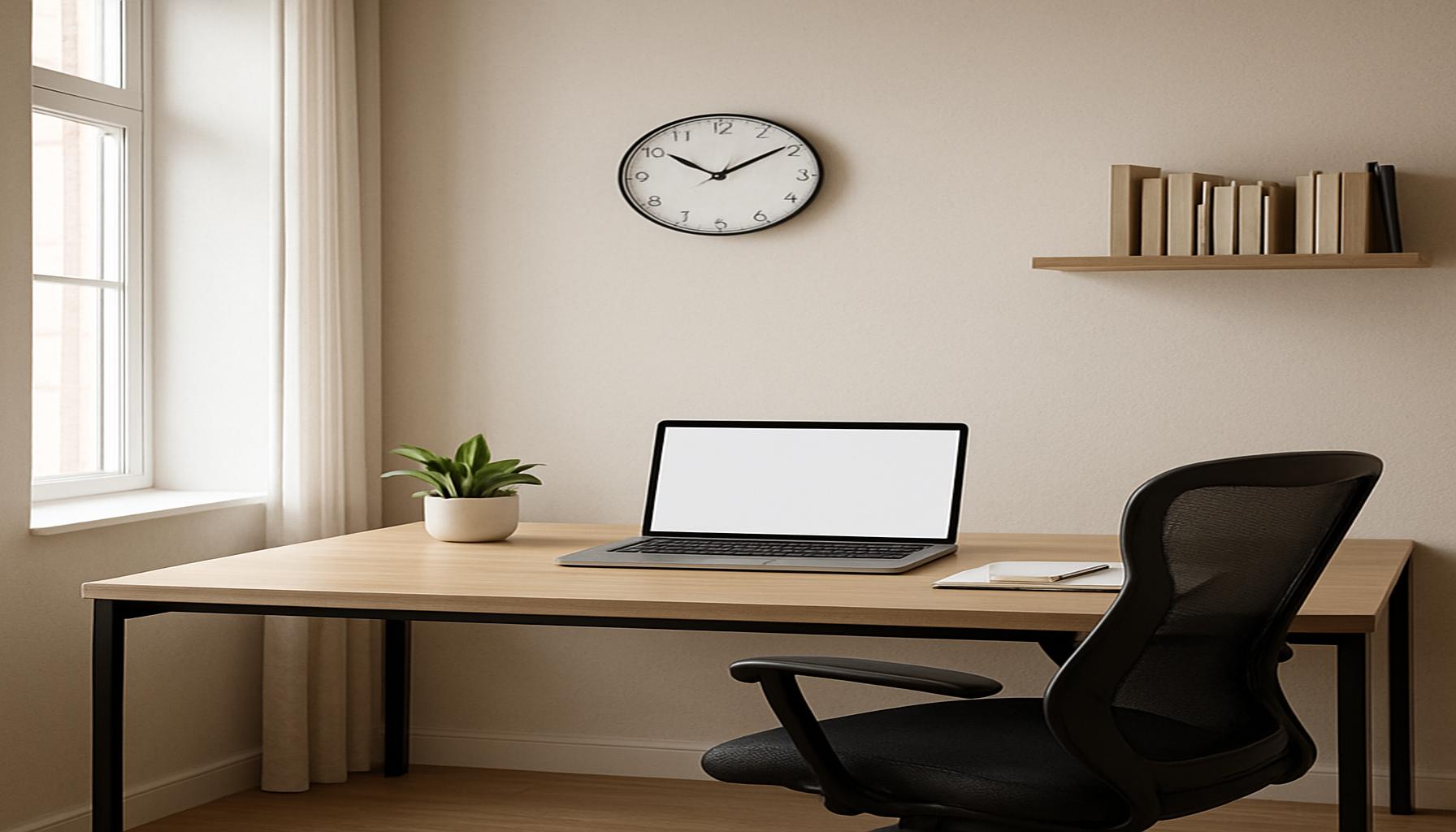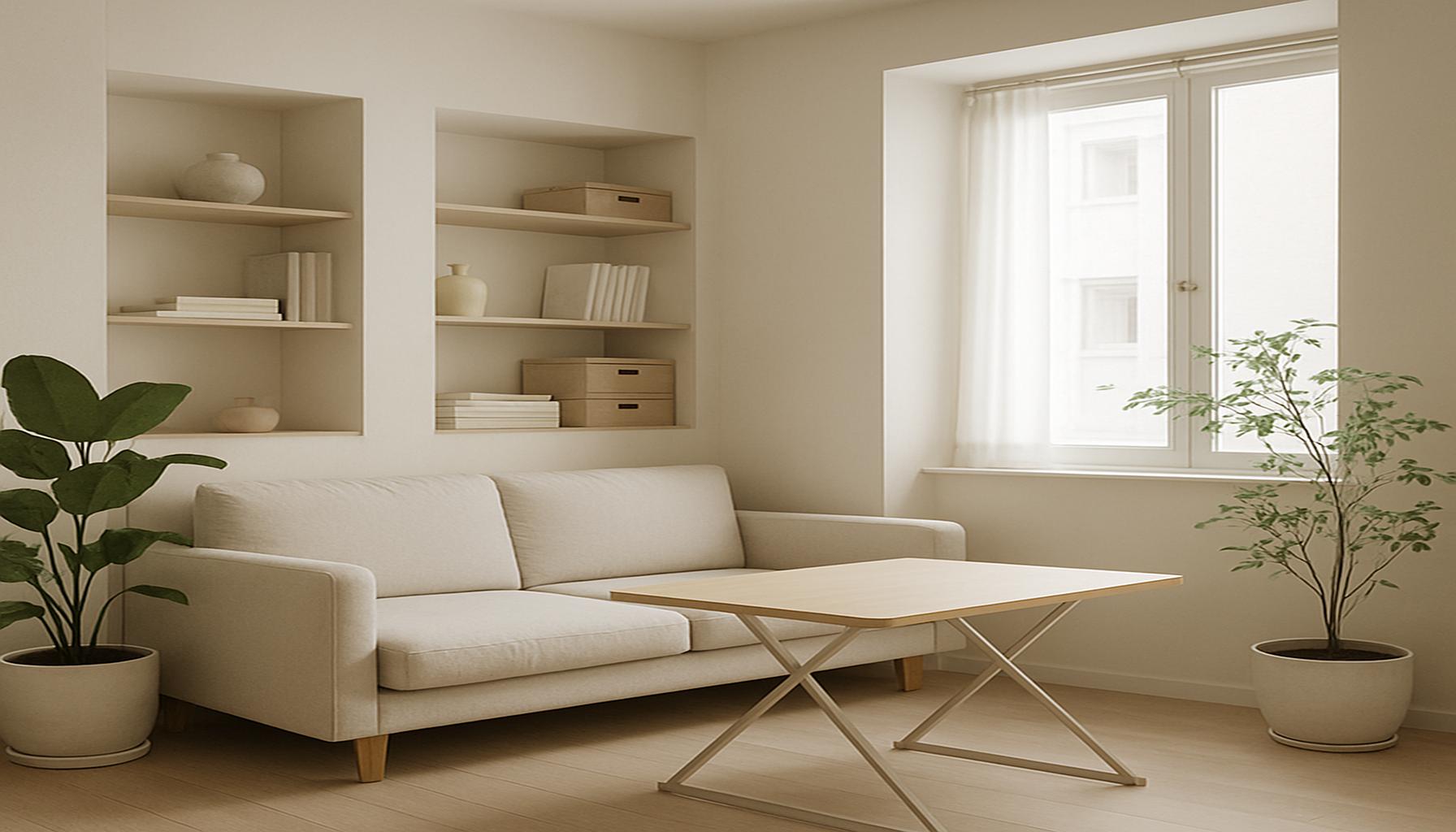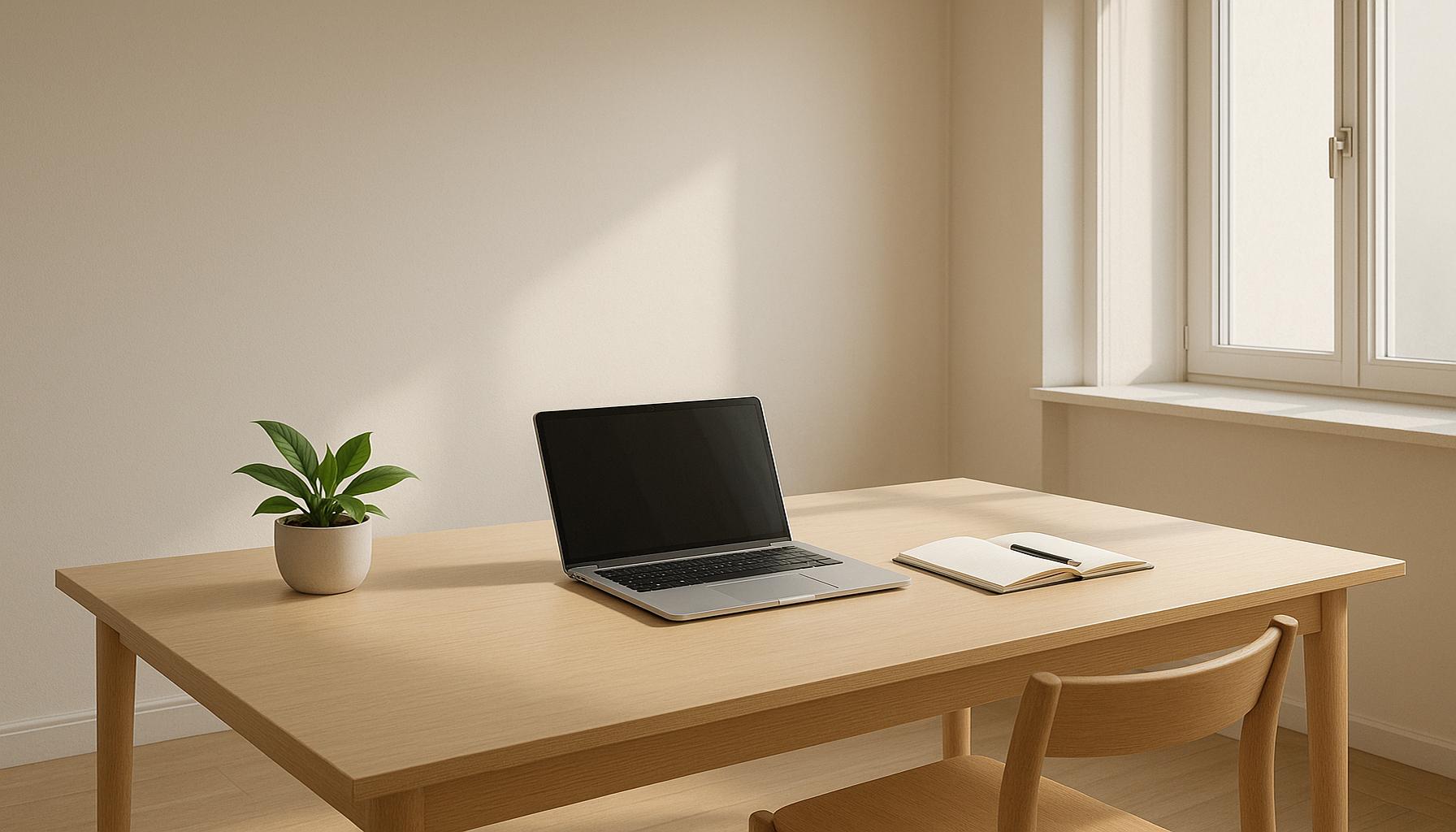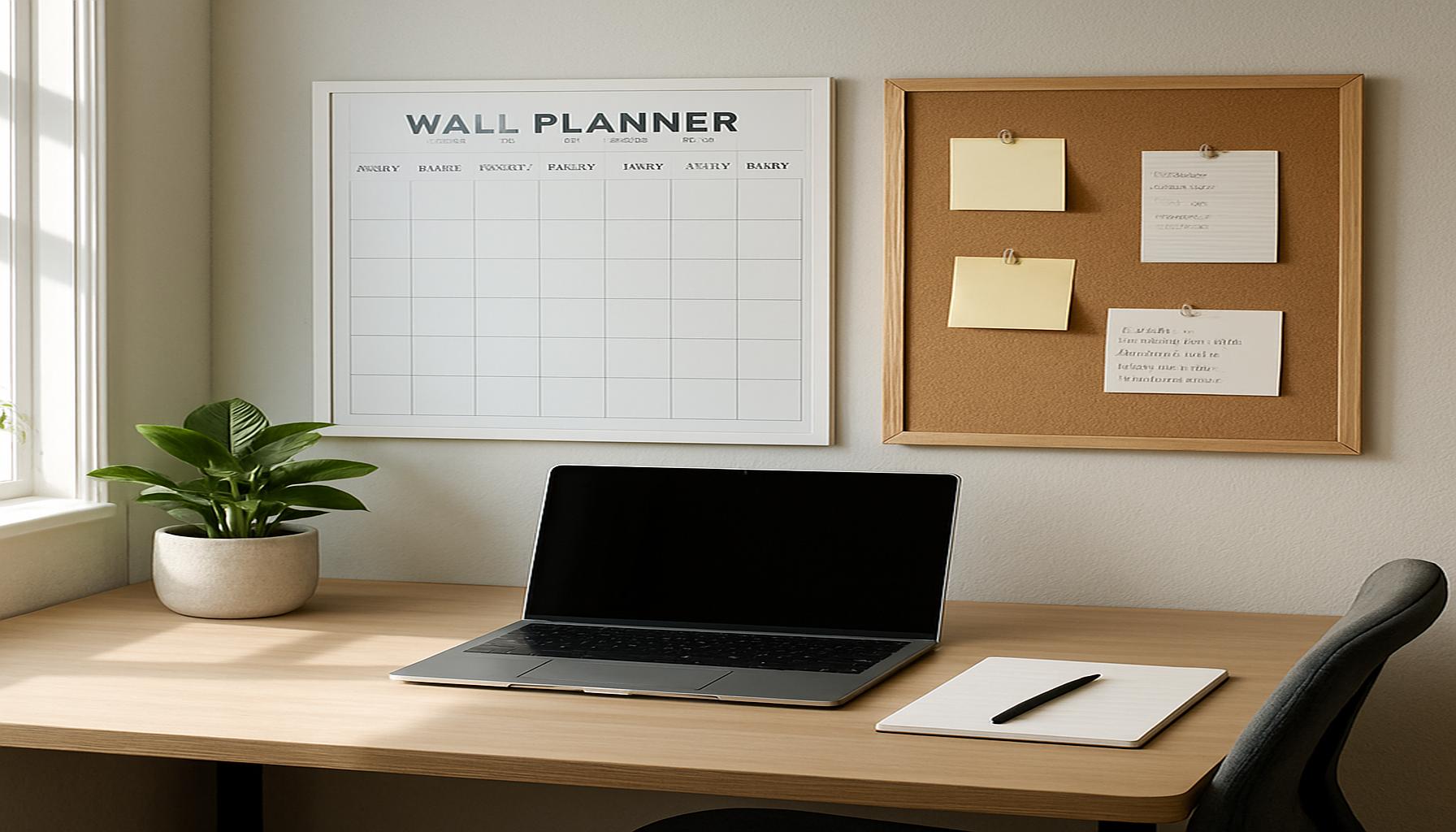How to Create a Minimalist Workspace that Increases Productivity

In the whirlwind of modern life, where distractions are just a phone notification away, establishing a workspace that promotes concentration and creativity is crucial. A minimalist workspace serves as a haven from the chaos, fostering an environment where both clarity and focus can flourish. By intentionally removing the superfluous, you cultivate a space that not only inspires efficiency but also stimulates innovative thinking.
Essential Elements of a Minimalist Workspace
Creating a minimalist workspace involves thoughtful curation of elements that reduce visual noise. Here are some essentials to consider:
- Decluttered Surfaces: A clean desk is the foundation of a minimalist workspace. Consider keeping only essential items like your computer, a notepad, and a pen. This practice not only minimizes distractions but also allows your mind to breathe, focusing on the task at hand.
- Neutral Color Palette: Colors have profound psychological effects. Opting for soft hues such as whites, creams, and pastels can create a calming atmosphere. For instance, a light gray wall paired with white furniture can reflect light and create a more open and inviting space.
- Smart Storage Solutions: Utilizing smart storage options, like drawer organizers or under-desk bins, helps keep frequently used items out of sight yet within reach. The goal is to create a seamless balance between accessibility and cleanliness, ensuring that the workspace remains uncluttered.
A minimalist workspace transcends mere aesthetics; it is about crafting a sanctuary for productivity. Research indicates that professionals often experience reduced stress levels and increased work output in such environments. For example, studies have shown that individuals working in minimalist offices report higher levels of satisfaction and creativity compared to those surrounded by excessive decor or clutter.
The Impact of Minimalism on Productivity
Adopting a minimalist approach to your workspace can transform the way you work. Here are some compelling benefits:
- Reduce decision fatigue: By minimizing choices in your immediate environment, you conserve mental energy for more significant decisions throughout the day.
- Enhance focus on critical tasks: A streamlined workspace allows the mind to hone in on what’s important, leading to improved quality of work and faster completion times.
- Foster a sense of tranquility: A clutter-free environment can contribute to a more peaceful mindset, encouraging deeper thought and consideration of complex projects.
As you embark on embracing minimalism within your workspace, remember that structural simplicity can pave the way for remarkable improvements in your day-to-day efficiency. Consider reevaluating your current workspace setup and notice how a few adjustments could potentially open new avenues for creativity and productivity. In a world rife with distractions, a minimalist approach might just be the game-changer you need to unlock your fullest potential.
DISCOVER MORE: Click here to learn how mindfulness can declutter your mind</p
Crafting Your Ideal Minimalist Workspace
Creating a minimalist workspace requires thoughtful consideration of your current environment, habits, and materials. The fundamental aim of minimalism is to retain only what is essential, leading to enhanced focus and productivity. It’s a transformative process, where the reduction of clutter, both physical and digital, can dramatically impact how efficiently you work. Here are some strategies to help you curate an effective workspace that embodies minimalist principles:
- Evaluate Your Current Tools: Begin by conducting a thorough inventory of the equipment and materials in your workspace. Do you have files piling up that you no longer need? Are there tools that gather dust instead of being utilized? This assessment is crucial. By removing items that don’t serve a specific purpose, you create a seamless working environment. For example, if you still have a stapler on your desk but primarily use digital documentation, it may be time to find a home for it elsewhere. A well-organized, clutter-free space will help streamline your workflow, reducing cognitive overload and allowing you to focus on the task at hand more effectively.
- Incorporate Nature: Bringing aspects of nature into your workspace can significantly enhance your well-being. Research indicates that having a plant not only purifies the air but also boosts mood and concentration. For instance, a small succulent or a vibrant peace lily can introduce life and color, contributing to a more inviting atmosphere. A study from the University of Queensland revealed that workplaces featuring greenery experienced a substantial 15% increase in productivity. Such additions serve dual purposes: enhancing your environment aesthetically while contributing to a healthier working ambiance.
- Limit Personal Decor: While personal items can add warmth, it’s essential to strike a balance. Excess anecdotal decorations may evoke feelings of distraction rather than motivation. Instead, curate a selection of one or two meaningful items—perhaps a framed photo of a loved one or a motivational quote. Keep these pieces strategically placed to remind you of your goals without detracting from your focus.
Another integral aspect of achieving a minimalist workspace is embracing the principles of digital minimalism. This concept pairs beautifully with physical decluttering. Start by organizing your digital files, regularly deleting old or unnecessary documents. A clean desktop and organized folder structures can significantly decrease stress levels. For instance, utilizing task management applications like Todoist or productivity tools such as Notion can replace overwhelming piles of sticky notes, further simplifying your environment.
Moreover, a tailored workspace arrangement plays a critical role in ensuring ergonomic comfort. If your work involves extensive computer use, invest in high-quality equipment. A dual-monitor setup positioned at eye level can prevent strain and foster better posture. Organizing your tools so that frequently used items are within arm’s reach minimizes disruption during your workflow. By creating an intuitive layout, you facilitate a smooth working process that enthralls productivity.
Transitioning to a minimalist workspace is a gradual undertaking that calls for both patience and perseverance. Start with manageable changes, such as clearing out one drawer or organizing your desktop. As you gain momentum, you’ll cultivate a workspace that not only enhances productivity but also instills a sense of peace, creating an ideal environment for innovative thinking and efficient execution. In the end, the true beauty of minimalism lies not just in reduced clutter but in the clarity and focus it brings to your work life.
When creating a minimalist workspace, it is essential to focus on design principles that enhance efficiency and reduce distractions. Here are several strategies to consider:1. **Declutter Regularly**: A cluttered desk can significantly impact productivity. Regularly review your workspace and remove items that aren’t essential for your current projects. Consider using storage solutions that allow you to hide away items, keeping your workspace visually appealing and distraction-free.2. **Optimize Natural Light**: Position your desk near a window to maximize natural light, which can greatly improve your mood and focus. Consider sheer curtains that allow light to filter in while maintaining privacy. Additionally, proper lighting can reduce eye strain during long hours of work.3. **Invest in Multi-functional Furniture**: Consider furniture that serves multiple purposes, such as a desk with built-in shelves or a chair that offers storage. This not only saves space but also maintains the minimalistic aesthetic you’re aiming for.4. **Use a Neutral Color Palette**: Choose calming colors such as whites, grays, and soft pastels for walls and decor, as these can contribute to a peaceful atmosphere that fosters concentration. Adding a pop of color through plants or artwork can bring life to the space without overwhelming it.5. **Implement Smart Technology**: Utilize technology that can streamline your tasks. This can range from app-based timers for the Pomodoro technique to noise-canceling headphones that help block distractions. Automating repetitive tasks can free up your mental bandwidth, allowing for increased focus on more critical responsibilities.6. **Establish Zones**: Designating specific areas within your workspace for different activities can help improve productivity. For example, have a reading nook with comfortable seating separate from your main work desk. This physical separation can create a clear mental distinction between tasks and their environments.Utilizing these strategies in your minimalistic workspace not only fosters a more productive environment but can also have a positive effect on your overall well-being. The simplicity of these designs can lead to clarity in thought and enhanced focus on tasks at hand.
DISCOVER MORE: Click here to enhance your daily routine
Streamlining Your Daily Routines for Maximum Output
A vital component of achieving a successful minimalist workspace is the ability to streamline your daily routines. An efficient workflow not only accommodates the principles of minimalism but also enhances productivity by minimizing wasted time and effort. Consider implementing the following strategies to optimize your daily processes:
- Establish a Morning Ritual: Starting your day with a clear, structured morning routine can set a productive tone for the day. Whether it’s a short mindfulness practice, a quick workout, or simply reviewing your goals, dedicating that time to yourself creates a mental space conducive to focus. Research from the Harvard Business Review indicates that structured rituals can lead to increased effectiveness, boosting your motivation and establishing a disciplined mindset from the onset of your workday.
- Designate Specific Work Zones: Within your minimalist setup, consider creating distinct zones for different tasks. For example, if you’re working on creative projects, designate a space that inspires innovation—perhaps with better lighting, comfortable seating, and art supplies. Conversely, establish another area dedicated to administrative tasks to keep distractions at bay. This physical delineation can enhance clarity and keep your mind organized by associating specific areas with distinct cognitive activities.
- Plan Daily Objectives: Set aside time at the start or end of each day to outline your top three objectives. Keeping your list concise aligns with minimalist philosophy, allowing you to prioritize what truly matters. Tools such as the Eisenhower Matrix can help you distinguish between urgent and important tasks, ultimately enhancing your decision-making process. Committing to just a few goals daily reduces overwhelm and enhances your ability to deep-focus, ultimately boosting your productivity.
Another aspect to consider is the power of time management techniques. One popular method is the Pomodoro Technique, which involves working in intervals, typically 25 minutes of focused work followed by a 5-minute break. This strategy is especially beneficial in a minimalist workspace, as it facilitates a disciplined rhythm that encourages sustained concentration. By breaking your workload into manageable segments, you mitigate feelings of fatigue and maintain a high level of engagement throughout the day.
Embracing technology mindfully is also crucial. Although minimalism encourages reducing distractions, leveraging tools that enhance your productivity can be invaluable. For instance, instead of cluttering your desk with numerous sticky notes or paper planners, utilize digital tools like Todoist, Trello, or Asana to track your projects and deadlines. These platforms promote organization while keeping your workspace physically free of clutter, aligning with your minimalist objectives.
Lastly, fostering a disciplined approach toward email management can greatly enhance your productivity. One effective strategy is to allocate specific time slots each day for checking correspondence, a practice known as batch processing. This limits the number of times you interrupt your workflow to check emails, helping you stay focused on the tasks that matter most. Additionally, using filters or labels can aid in prioritizing important messages over less significant ones, ensuring that you maximize your efficiency while minimizing digital distractions.
By redefining your routines and integrating thoughtful productivity techniques within a minimalist framework, you’ll not only cultivate a workspace that enhances concentration but also experience a remarkable boost in your overall efficiency. The goal is not just to achieve a clean space, but to create an environment that actively supports your ability to think clearly and accomplish your objectives with ease.
DISCOVER MORE: Click here for tips on creating a minimalist space
Conclusion: Cultivating Simplicity for Enhanced Productivity
In an increasingly chaotic world, cultivating a minimalist workspace emerges as a powerful antidote that fosters heightened productivity and clarity of thought. By thoughtfully reducing clutter in both physical and digital realms, you can create an environment conducive to focus and innovation. The strategies outlined—establishing structured routines, designating purpose-driven work zones, planning daily objectives, and implementing savvy time management techniques—are not merely guidelines, but essential practices toward achieving your professional aspirations.
Moreover, embracing technology strategically can transform your workspace into a hub of efficiency. Utilizing apps like Trello or Asana not only keeps your tasks organized but allows your physical space to mirror a sense of tranquility and order. As you streamline email management through practices like batch processing, you further minimize distractions, ensuring your attention remains on what truly matters.
Ultimately, the essence of a successful minimalist workspace lies in intentionality. Every element—be it a piece of furniture or a tool—should serve a clear purpose, enhancing your ability to think creatively and work efficiently. As you redefine your approach to workspace design, remember that simplicity supports not just productivity, but creativity and well-being. Dive deeper into the world of minimalism, and explore the profound impacts it can have on your professional life. Embrace the challenge of creating a space that not only looks minimal but feels incredibly empowering.


